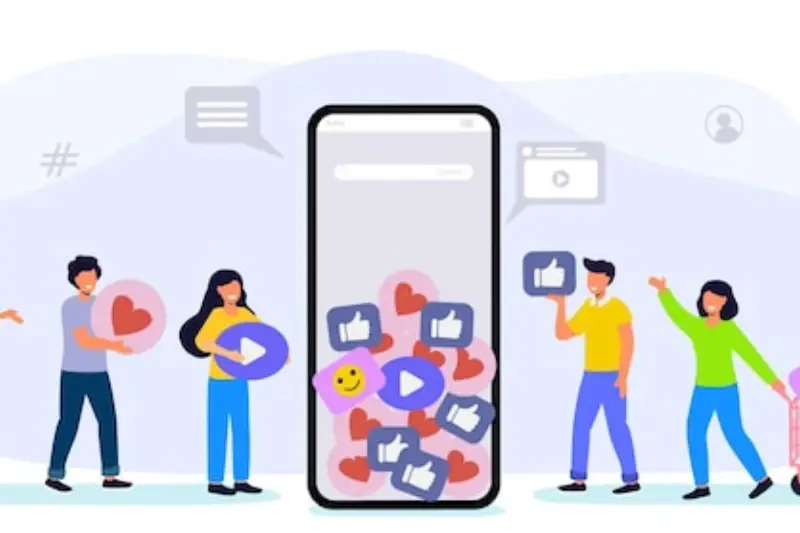The Complete Guide to App Store Success for Businesses
Did you know that less than 0.01% of mobile apps ever achieve meaningful business success? That's a sobering statistic when you consider there are millions of apps competing for attention in today's crowded marketplace. The difference between those rare success stories and the forgotten failures isn't luck—it's strategy.
Building a great app is only half the battle. Getting people to find it, download it, and actually use it? That's where most businesses stumble. I've watched countless companies pour their hearts and budgets into developing brilliant apps, only to see them disappear into the void because they treated app store success as an afterthought rather than a core business strategy.
The app store isn't just a distribution channel—it's your storefront, your marketing team, and your first impression all rolled into one
This guide will walk you through everything you need to know about turning your business app into an app store success story. We'll cover the algorithms that determine whether people can find your app, the optimisation techniques that boost downloads, and the marketing strategies that keep users coming back. No fluff, no guesswork—just practical steps you can implement right away to give your app the best possible chance of thriving in the competitive world of business app store success.
Understanding App Store Algorithms and Rankings
After years of working with apps that have made it big and others that, well, didn't quite hit the mark—I can tell you that understanding how app stores actually work is absolutely fundamental to your success. The Apple App Store and Google Play Store don't just randomly decide which apps to show first; they use complex algorithms that consider dozens of different factors to determine rankings.
Key Ranking Factors You Need to Know
Think of app store algorithms like a scoring system that's constantly evaluating your app's performance. Download numbers matter, but they're not everything—user reviews, ratings, and how often people actually use your app after downloading it all play massive roles in where you'll appear in search results.
Here are the main factors that influence your app's ranking:
- Download velocity (how quickly people are downloading your app)
- User ratings and review quality
- App usage and retention rates
- Keyword relevance in your app title and description
- App update frequency
- Conversion rate from views to downloads
How Search Actually Works
When someone searches for "fitness tracker" or "photo editor," the app stores look at all these factors together to decide which apps deserve the top spots. The tricky bit? These algorithms change regularly, which means what worked six months ago might not work today. That's why staying on top of your app store performance isn't a one-time job—it requires ongoing attention and optimisation.
Building Your App Store Optimization Foundation
Right, let's get down to the nuts and bolts of app store optimisation—or ASO as we call it in the business. Think of this as laying the groundwork for your business app store success before you even think about fancy marketing campaigns or paid advertising.
The foundation starts with understanding what your business app actually does and who needs it. I know this sounds obvious, but you'd be surprised how many corporate apps I've seen that can't clearly explain their value proposition in a single sentence. Your app's core purpose needs to be crystal clear because that's what drives every ASO decision you'll make.
Keywords Are Your Best Friend
Next up is keyword research—and no, this isn't just copying what your competitors are doing. You need to find the sweet spot between what your target users are actually searching for and terms that aren't so competitive that you'll never rank. For enterprise app promotion, this often means focusing on industry-specific terms rather than generic ones.
Getting Your Metadata Right
Your app's metadata—the title, subtitle, and keyword field—forms the backbone of your app store business strategy. These elements tell the app stores what your app is about and when to show it in search results. Get this wrong and even the most brilliant business app will struggle to find its audience.
Start your ASO foundation by writing a one-sentence description of what problem your app solves—if you can't do this clearly, neither can your potential users understand why they need your app.
Creating Compelling App Store Listings That Convert
After years of helping businesses get their apps noticed, I can tell you that most people completely mess up their app store listings. They write descriptions like they're submitting a university dissertation—boring, technical, and completely missing the point. Your app store listing isn't just a description; it's your sales pitch to thousands of potential users who are scrolling past dozens of other apps.
The secret sauce? Think like your users, not like a developer. When someone finds your app, they've got a problem they need solving and about thirty seconds of patience. Your app name should be clear and searchable—avoid clever wordplay that nobody will ever find. Your description needs to answer one simple question: "What's in it for me?" within the first two sentences.
Key Elements That Actually Matter
- Screenshots that show real app screens, not fancy marketing graphics
- App icon that's instantly recognisable at tiny sizes
- Description that focuses on benefits, not features
- Keywords woven naturally into your text
- Reviews and ratings that build trust
Remember, people download apps to solve problems or get entertained—they don't care about your technical achievements. Focus on what your app does for them, make it easy to understand, and you'll see those conversion rates climb. Whether you're considering a free vs paid monetization strategy, your store listing should clearly communicate the value proposition to potential users.
Mastering App Marketing Before Launch
Here's something I learnt the hard way after working with hundreds of businesses over the years—most companies think app marketing starts after they've launched. Wrong! The smartest business app store success stories begin their mobile app strategy development months before their app even hits the stores. I've watched too many brilliant enterprise apps disappear into obscurity because their teams thought "build it and they will come" was a viable strategy.
Building Your Pre-Launch Audience
Your enterprise app promotion should start the moment you decide to build an app. Create a simple landing page explaining what your app will do and why people should care. Start collecting email addresses from interested users—these become your day-one downloaders. Share behind-the-scenes content on LinkedIn and other professional networks where your target audience hangs out.
The best time to start marketing your business app was six months ago. The second best time is right now.
Strategic Pre-Launch Activities
Reach out to industry publications and bloggers who cover your sector; they're always looking for interesting stories about new business solutions. Consider creating a beta programme for select customers—not only does this give you valuable feedback, but it also creates a group of potential advocates who are invested in your app's success. Your app store business strategy needs these early champions to create momentum from day one, and having a solid business case for your mobile app will help you secure the resources needed for effective pre-launch marketing.
Driving Downloads Through Strategic Promotion
Getting your app noticed after launch requires more than just hoping people will stumble across it—you need a proper promotion strategy. I've worked with clients who've built brilliant apps only to watch them disappear into the abyss of app stores because they didn't think about promotion. Don't let that be you!
Start with your existing channels. Your website, email list, and social media followers are your first port of call; these people already know and trust your brand. Send announcement emails, update your website with app download links, and create social media posts that show your app in action. Real screenshots work better than fancy graphics here.
Paid Advertising That Actually Works
Apple Search Ads and Google App campaigns can drive serious downloads when done right. The trick is targeting people who are already searching for apps like yours rather than trying to convince everyone they need your app. Focus your budget on keywords that your competitors rank for—you'll catch users who are already in buying mode.
Building Partnerships and PR Buzz
Reach out to bloggers, podcasters, and journalists in your industry. Most are looking for interesting stories, and a new app launch gives them content. Keep your pitch short and explain what makes your app different—not just what it does, but why it matters to their audience. If you're seeking investment, learn how to pitch your mobile app idea to investors effectively to secure funding for your promotional efforts.
Engaging Users and Boosting Retention Rates
Getting people to download your business app is just the beginning—keeping them engaged is where the real challenge lies. I've watched countless businesses celebrate their download numbers only to discover that most users abandon their app within the first week. The harsh reality? If your app doesn't provide immediate value, users will delete it faster than you can say "corporate app marketing".
The secret to boosting retention starts with your onboarding process. Skip the lengthy tutorials and get users to their "aha moment" as quickly as possible. Show them exactly why your app matters to their daily workflow or business needs within the first 30 seconds. Push notifications can be powerful retention tools, but use them wisely—nobody wants to be bombarded with irrelevant alerts. Understanding why users abandon apps can provide valuable insights into retention best practices across different industries.
Send personalised push notifications based on user behaviour rather than generic messages to everyone. Users who engage with specific features should receive targeted tips about related functionality.
Key Retention Strategies That Actually Work
- Implement progressive onboarding that reveals features gradually
- Create in-app achievements and milestones to encourage continued use
- Offer personalised content based on user preferences and behaviour
- Build a feedback loop so users feel heard and valued
- Regular app updates that address user pain points and add requested features
Remember, a successful app store business strategy isn't just about acquisition—it's about creating lasting relationships with your users through consistent value delivery.
Measuring Success and Optimizing Performance
Right, so you've launched your app and the downloads are trickling in—now what? Well, this is where the real work begins. You need to track everything that matters and I mean everything. App store rankings, download numbers, user reviews, retention rates, and most importantly, how people actually use your app once they've downloaded it.
Key Metrics That Actually Matter
Don't get caught up in vanity metrics that look impressive but don't tell you much. Yes, total downloads sound great at dinner parties, but what you really need to watch is your Day 1, Day 7, and Day 30 retention rates. If people are downloading your app but deleting it after one use, you've got a problem that no amount of marketing will fix. Learning how to prove ROI of a mobile app to stakeholders requires focusing on these meaningful engagement metrics rather than vanity numbers.
Making Data-Driven Improvements
I've seen too many businesses make changes based on gut feelings rather than actual data. Set up proper analytics—Google Analytics, Firebase, or whatever tool works for your budget—and let the numbers guide your decisions. If users are dropping off at a particular screen, fix that screen. If certain keywords aren't bringing in quality users, swap them out. The beauty of digital marketing is that you can test, measure, and improve constantly without breaking the bank. For businesses working with limited resources, understanding app development costs and budget options can help you allocate funds effectively between development and marketing efforts.
Conclusion
Building business app store success isn't rocket science, but it does require patience and a proper plan. After eight years of helping companies launch their apps, I've learnt that the businesses who succeed are the ones who treat app store success as a marathon, not a sprint. They understand that getting downloads is just the beginning—keeping users engaged and coming back is where the real magic happens.
Your corporate app marketing strategy needs to cover all the bases we've discussed: solid ASO foundations, compelling store listings, smart pre-launch marketing, strategic promotion, user retention tactics, and ongoing performance monitoring. Miss one piece and you're making life harder for yourself. The companies I work with who nail their enterprise app promotion are the ones who see each element as part of a bigger picture, not isolated tasks to tick off a list.
What I find most rewarding is watching businesses transform their approach once they understand how the app stores actually work. They stop throwing money at random advertising and start making data-driven decisions about their app store business strategy. The results speak for themselves—better rankings, more downloads, higher user retention, and most importantly, real business growth. Your app has the potential to be brilliant; now you've got the roadmap to make it happen.
Share this
Subscribe To Our Blog
You May Also Like
These Related Stories

App Store Ranking Secrets: What Actually Works in 2025

How to Create App Content That Google (and Users) Actually Love





